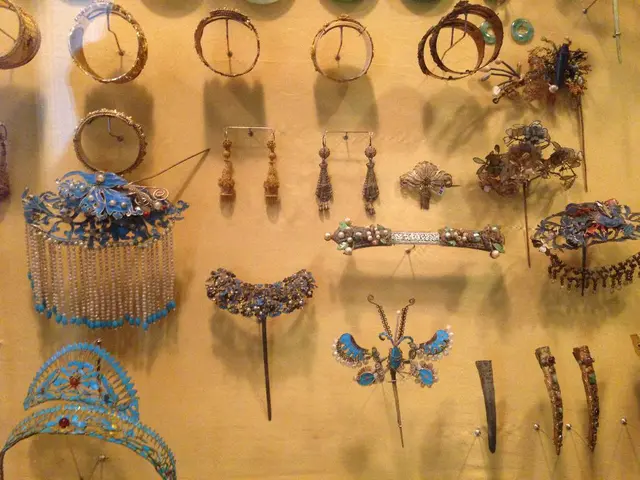Vibrant, aromatic blossoms excel in arid environments and serve as lovely additions to decorative vases.
Unleash your wild side with Eremurus, those eye-catching, towering assets for any garden! Picture a mesmerizing scene: the break of dawn over the parched Tien Shan and Pamir Mountains of Central Asia. Then, suddenly, the half-light reveals the towering inflorescences of hundreds of Eremurus plants, their delicately fragrant flowers stirring your senses amidst the barren desert landscape.
Now, let's get back to the British mainland and discover Eremurus in a more accessible setting: RHS Garden Hyde Hall in Essex. When I first laid eyes on over 600 Eremurus robustus in a west-facing border back in 2000, it was nothing short of stunning! What's equally impressive is that these 600-plus plants sprung from just a dozen original crowns planted decades prior.
So, what exactly are Eremurus? They are a genus of incredible, bulbous perennials, also known as desert candles or foxtail lilies. The genus comprises 59 species, though only a handful of these are widely available for gardeners. Their striking, colorful flowers (ranging from white, pink, yellow, orange, and beyond) transform any landscape for a brief, yet spectacular, three to four weeks.
These vibrant, floral Titans take up minimal space, self-seeding rapidly in spring to form rosettes of fleshy grass-like leaves, before shooting skyward in early to midsummer. Each tall Eremurus flower spike boasts hundreds of star-shaped, lightly fragrant flowers arranged concentrically around the stem. A charming quirk? Their propensity to wander off from an upright position, resulting in delightful kinks and adding to their charm.
When it comes to where to plant Eremurus, there are a few options depending on your garden setup. For those with a gravel garden, Eremurus can look stunning as a foreground plant, accompanied by a boulder or two and some carefully placed gravel. They make quite the statement paired with self-seeding colonizers like California Poppy (Eschscholzia californica) or Love-in-a-mist (Nigella damascena) - plants that can expertly disguise their base while leaving enough breathing room.
Silver-leaved lavenders, Santolina, and Helichrysum are excellent companions, as is the statuesque Salvia candelabrum, which boasts lavender-blue flowers on long, wand-like stems. If you don't have a gravel garden, the foot of a sunny wall will do the trick.
In a conventional border, Eremurus fare better in the middle or back, though a cautious selection of surrounding plants is necessary to ensure proper air circulation and only minimal shading. Opt for plants with a Mediterranean vibe, such as Stipa gigantea, Rosa glauca, and the tall, airy cardoon, Cynara cardunculus.
So, how do you grow these magnificent plants? Start by planting Eremurus crowns in a shallow, but wide, excavation, mixing improved soil such as spent mushroom compost into the excavated soil to provide additional nutrients. Keep the crown only just below the soil surface, so it's visible, and point the roots outwards on the surface. After planting, leave the crown uncovered and mulch around it with horticultural grit for added drainage and clarity.
Eremurus perform best in a sheltered spot with full sun and well-drained soil, so keep them away from frost pockets. Buy crowns during late spring for planting or opt for potted crowns during autumn from select suppliers. But be warned, potted Eremurus' roots may point downwards in the pot, potentially causing drainage and rotting issues. So, if you do buy as potted plants, gently tease the compost away from the roots so they can be planted correctly.
Should you wish to propagate Eremurus, you can do so by seed in autumn or through division after the flowering period. Remember to watch out for pesky slugs and snails that may target the emerging foliage and crowns.
When it comes to selecting the best Eremurus to grow, there are several standouts. Eremurus himalaicus, Eremurus x isabellinus 'Pinokkio', Eremurus 'Romance', Eremurus 'Joanna', and Eremurus 'Brutus' are exceptional choices. Whether you prefer white, pink, orange, peach, or yellow flowers, there's an Eremurus for every garden!
To explore and purchase these remarkable plants, visit established nurseries such as Beth Chatto Plants & Gardens, Burncoose Nurseries, or RHS Garden Hyde Hall.
Looking for additional inspiration? Check out these top picks for companion plants for Eremurus in a gravel garden:
- Dames Rocket (Hesperis matronalis) - Creates an eye-catching contrast with its vibrant purple and white flowers.
- Ranunculus - Provides a low-growing, delicate carpet of petals that complements tall Eremurus spikes.
- Muscari - Lends a carpet of blue or white grape hyacinths at ground level, filling in gaps between gravel and serving as an excellent groundcover.
- Iris - Supports Eremurus with a similar vertical element, creating a striking combination when planted with complementary colors.
- Hyacinth - Enhances early spring interest with its vibrant colors and enchanting fragrance.
- Eremurus, the striking Eurasian plants with towering flower spikes, can be integrated into a home-and-garden lifestyle, creating mesmerizing blooms that transform any home-and-garden setting.
- For enthusiasts seeking to diversify their home-and-garden arrangements, there are several hardy and vibrant Eremurus species to consider, such as Eremurus himalaicus, Eremurus x isabellinus 'Pinokkio', and Eremurus 'Romance', each offering distinct flower colors to suit various lifestyle preferences.




